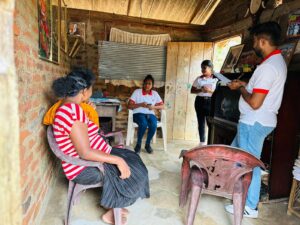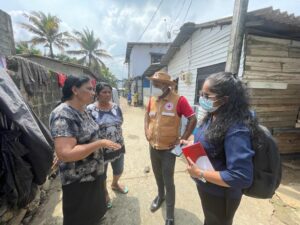Community Based Disaster Risk Management (CBDRM)
In response to the increasing frequency of disasters, both communities and disaster management institutions have recognized the need for proactive measures to mitigate their impact. Embracing the Community-Based Disaster Risk Management (CBDRM) approach, the Sri Lanka government and other disaster management actors have prioritized the development of community capacity and resilience.
Sri Lanka Red Cross Society (SLRCS) has emerged as a key player in implementing CBDRM interventions, as identified in the Government Road Map and the National Disaster Management Plan. Our initiatives align closely with the government framework, focusing on:
- Participatory Risk Profiling: Conducting hazard, vulnerability, and capacity assessments to develop community risk reduction plans.
- Empowering Communities: Organizing village disaster management committees and training community-level response teams, equipping them with necessary gear.
- Establishing Safe Evacuation Routes: Identifying and marking evacuation routes with signboards.
- Capacity Building: Conducting simulation exercises, drills, and awareness programs to enhance disaster preparedness at the grassroots level.
- Implementing Mitigation Activities: Identifying and implementing small-scale, community-managed mitigation activities.
- School-Based Programmes: Engaging with schools to foster a culture of preparedness, including the formation of disaster management units, safety teams, and the implementation of mock drills and disaster risk reduction plans.
As a result of SLRCS’s CBDRM interventions, vulnerable communities have become more resilient, better equipped to prepare for, cope with, and mitigate disasters while fostering a sense of self-reliance. Our CBDRM efforts have been integrated with other SLRCS programs, including water and sanitation, livelihoods, and psychosocial support, in coordination with partner organizations.

